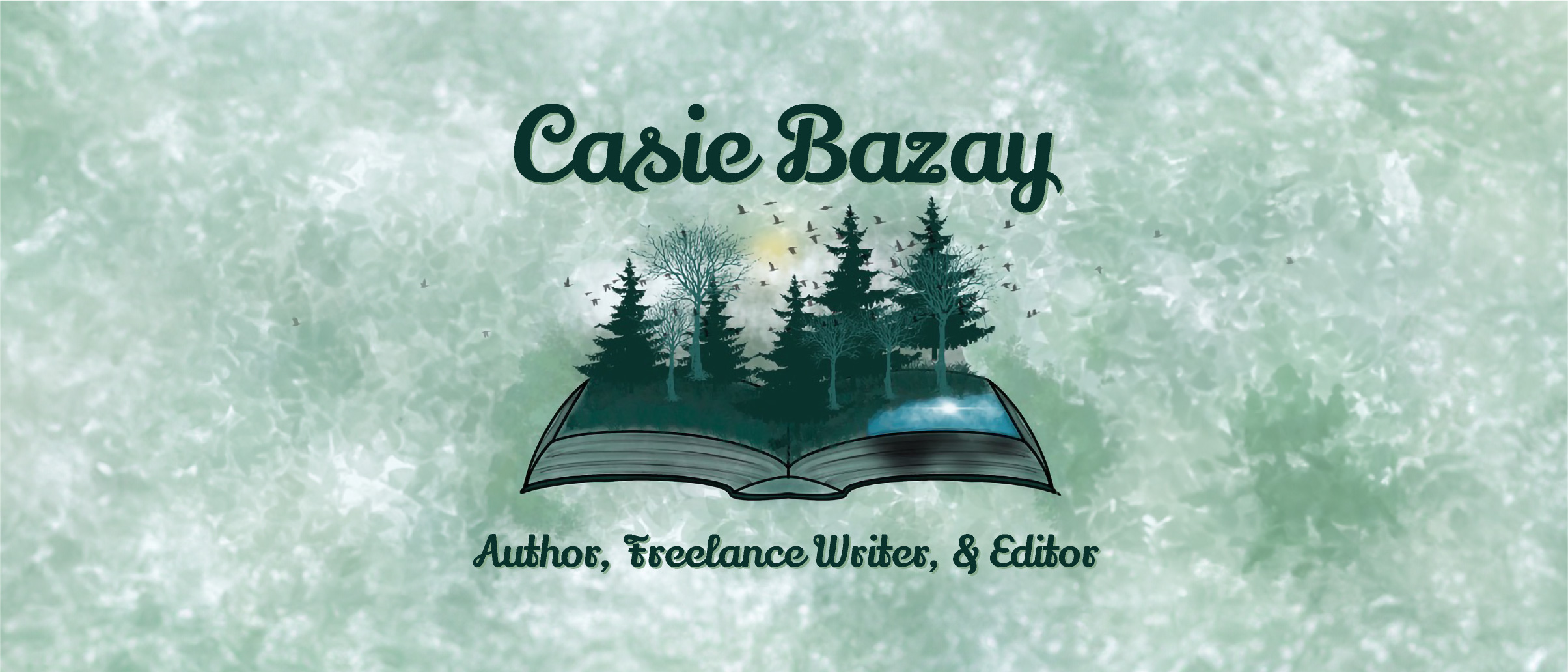If someone would have asked me what a query was ten years ago, I wouldn’t have had a clue. But thanks to my grand entrance into the world of writing conferences, critique groups, and traditional publishing research, I quickly learned all about these fun little letters. *insert smirk here*
Now, I wouldn’t say my first query letter was overly spectacular, but it did work. I wrote it fairly quickly (and by quickly, I mean in a few days), sent it off to an agent, and a few months later, a miraculous thing happened: I received a full request!
Of course, it would take me four different books and four different query letters (each revised dozens and dozens of times) to acquire a publishing deal and agent, but I’ve always felt like I’ve had a pretty good handle on writing queries. Now please don’t get me wrong–that doesn’t mean they come easily to me–but I’ve been able to garner interest and full requests with each of my books, so I feel like my query letters have done their job.
To back up a bit, let’s start with some query letter basics, beginning with “what is a query letter?”
Quite simply, a query is a letter you send to a literary agent or publisher in which you try to interest them in your book. There are three main parts to this letter: the hook, the book, and the cook (I didn’t come up with this cutesy explanation, but it’s stuck with me over the years). In a query letter, you want to entice an agent or editor to read your book (and hopefully take you on as a client) and you do this by telling them just enough about your book to leave them wanting more. Note: In a query letter, you do not want to give away the ending of your story (unlike in a synopsis).
A query letter should be 3-5 paragraphs typically, and it’s recommended to keep the main portion of your letter (minus your bio) at 250 words or less. In order to do this, you must be concise. In fact, brevity will be your best friend in both a query and synopsis.
Here is the standard query letter structure I usually went with:
Salutation (in which you spell the agent/editor’s name correctly!)
Personalization Mention why you’re querying this specific person. Is it because you have something in common with them? Met them at a conference? Because you read that they’re specifically looking for a book like yours?
Hook This is simply a sentence or two about your book which should grab the reader’s attention. However, I should also mention that I didn’t always use a hook and would often just go right into the book pitch (which can also work as a hook, in some instances).
Book Pitch This is where you introduce your main character(s), setting, and give some brief information about the story set up, including the main problem. It’s important to be as specific as possible here, but avoid using made-up terms specific to your book (common in fantasy or sci-fi) as this may only confuse the reader. Also avoid vague phrases such as “dark forces”, “secrets unravel”, “life is forever changed” (See a big list of vague phrases here.) You want the agent/editor to see how cool and unique your story is, so vagueness is never a good thing in a query letter.
You will usually need 2-3 paragraphs for your book pitch and ALWAYS end this section with the stakes, aka what your character is risking in order to reach their goal. I won’t lie: the stakes can be tough to come up with and in some cases, you may realize your book doesn’t have high enough stakes and that you actually need to go back and address this problem in the story.
Housekeeping (Word Count, Genre, & Comps) Some people choose to put this up top, but I usually put it after my book pitch. In this part of the query letter, give your word count (rounded to the nearest thousand), genre, and provide at least two comparative titles, preferably published within the last 3-5 years. Comps can be tricky, too, but it’s important to read widely in the genre you write in. Find other books which have a similar voice, similar characters, a similar storyline, or simply name books that you think readers of your book would also enjoy (for example, you can say: MY BOOK would likely appeal to readers of THIS BOOK and THAT BOOK.) Note: It’s also acceptable to use one movie as a comp (but not two movies!)
Closing Just as with any letter, you need a closing in your query letter. This can be as simple as, “Thank you for your time and consideration.”
Name and Contact Info. Include your first and last name (real name, not pen name), email, phone number, Twitter handle, website url, or any other pertinent information here.
A few tips for your query letter:
- Put your title in ALL CAPS;
- In most instances, don’t mention more than 3 main characters to avoid confusion;
- Put comp titles in “quotation marks” or italics;
- In your bio, stick with writing-related stuff or info. that is pertinent to your book (for instance I’m a police detective and I wrote this detective novel). If you don’t have much in the way of writing accolades, just keep your bio short and sweet. No biggie!
- Genre and target audience are two different things, so make sure you understand both if you are writing for young adults or children;
- It’s okay to infuse some of your book’s voice in the query (and even recommended) but keep it professional, too.
Now, to give you a couple of examples, I’ll share the two query letters that garnered the most requests for me, personally. First up, the query letter from my second book, THE EVOLUTION OF EVIE:
Dear Ms. Agent,
But having friends brings a new set of problems. After her new pals persuade her to skip class, Evie finds herself both in detention and in trouble at home. Never mind that her crush on Taylor threatens to ruin things between them—especially after she exposes his biggest secret to keep popular girls at bay. Evie tries to redeem herself by standing up to a bully who’s picking on another friend, but when this leads to a scuffle, she earns her second ticket to the principal’s office. It now appears family finances won’t be the only thing preventing her from getting Titus back. If Evie can’t convince her parents she’s still the same nice, responsible girl, semi-delinquent friends and all, she may very well have to face the fact that she’ll never see her horse again.
With a STEM theme and diverse cast, THE EVOLUTION OF EVIE is complete at 49,000 words. It will appeal to fans of R.J. Palacio’s “Wonder” and Ali Benjamin’s “The Thing About Jellyfish.”
I’m a former middle school teacher, now working as a freelance writer and blogger specializing in horses. I have numerous articles published in The Horse, Country Extra, Natural Horse Magazine, and Horse Network.
Thank you for your time and consideration.
Sincerely,
Casie Bazay
And secondly, the query letter for the book which will be out next year, only now it’s titled NOT OUR SUMMER:
Dear Mr. Agent,
Because you mention that you’re interested in working with emerging writers and are currently seeking YA projects, I’m hoping my contemporary novel, THE BUG COLLECTOR’S BUCKET LIST, might appeal to you.
When their agoraphobic grandfather dies, K.J. and Becka, are shocked to learn two things: 1.) He had a secret fortune meant to fully fund their college tuition and then some, and 2.) They must complete his unfulfilled bucket list to get it.
K.J. would rather eat cockroach soup than spend the summer traveling with her snooty cousin, Becka. But since money’s up for grabs (aka, an escape from trailer park hell), she’s game for Grandpa’s five tasks. First up: Riding a mule into the Grand Canyon. How hard can it be?
Becka, on the other hand, has a full soccer scholarship to the University of Arkansas and a plan for her life which in no way includes her oddball cousin, K.J. She’s only completing Grandpa’s tasks for her mom, who’s saddled with hospital bills from the recent death of Becka’s brother.
Aside from a close encounter with a grizzly and a near-drowning incident at the Bull Sluice, the girls must also survive each other. But when a letter from Grandpa reveals the truth behind their mothers’ long-time feud and his real intent behind these trips, their collective world is rocked. If K.J. and Becka can’t forgive their mothers’ mistakes and accept each other, differences and all, Grandpa’s ultimate wish—to mend his divided family—will have been buried inside that grasshopper green casket right along with him.
Told through the alternating viewpoints of both cousins, THE BUG COLLECTOR’S BUCKET LIST (69,000 words) is part Ladybird and part Adi Alsaid’s Let’s Get Lost.
After teaching middle school for ten years, I now work as a freelance writer and blogger. I have articles published in Country Extra, Cool Tears and Tiny Campers, The Horse, Horse Network, TeenEquine, Natural Horse Magazine, and Oklahoma Horses.
Thank you for your time and consideration.
Casie Bazay
Questions about queries? Feel free to ask in the comments! And if you’re interested in getting help with your query, I offer critiques as part of my editing services. More info here!

